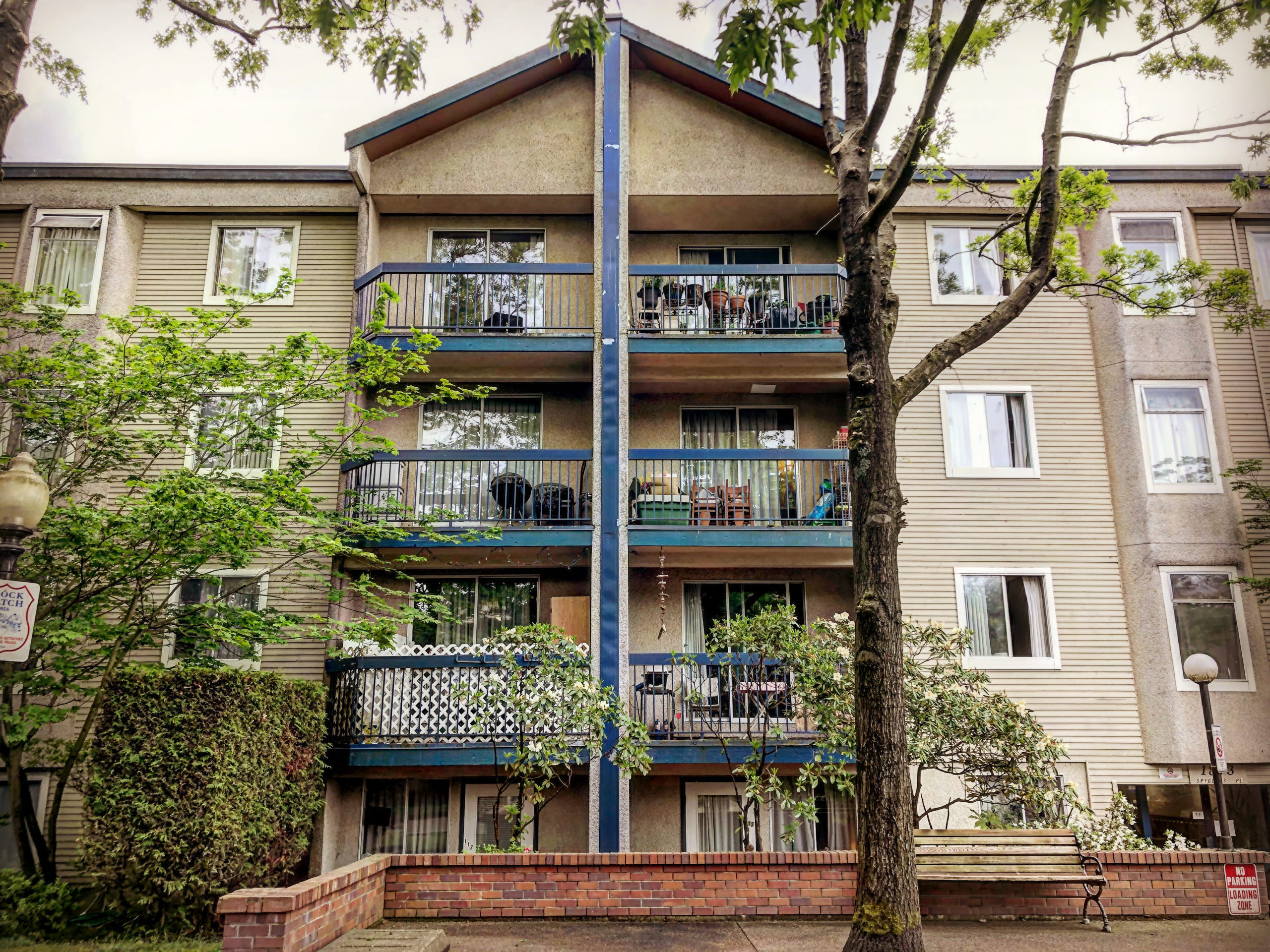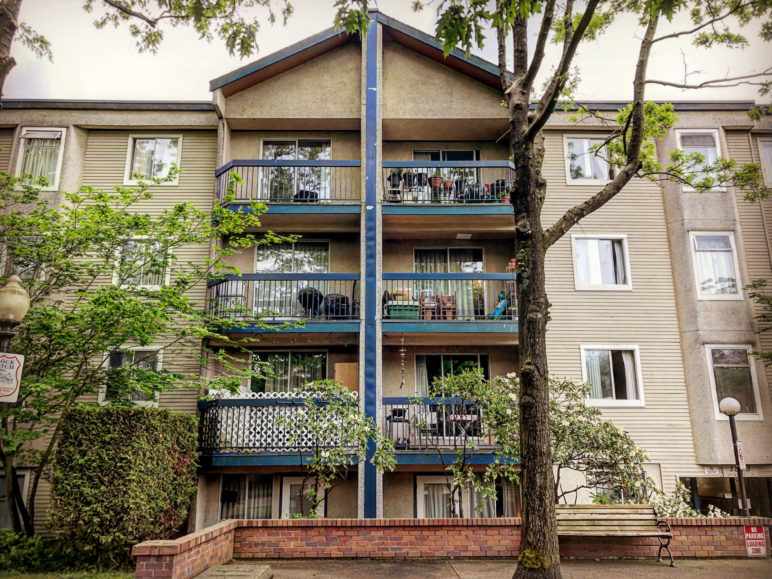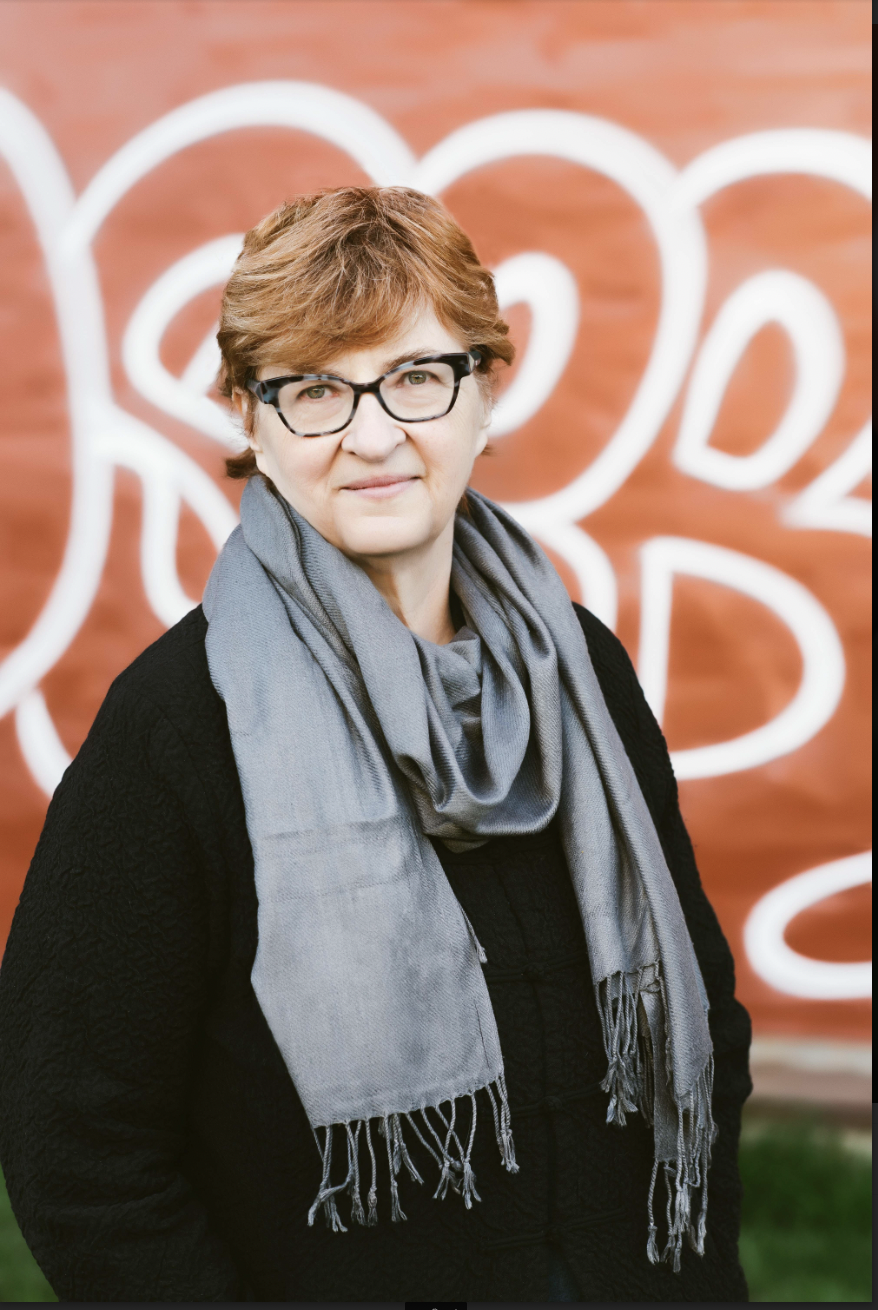The people who manage co-op and nonprofit housing in British Columbia braced themselves for the worst on April 1. It seemed likely that BC’s affordable housing providers would be hit hard as the pandemic cut a swath through BC jobs and people weren’t able to pay their rent .
Government-assisted housing is home to many in BC who work at low- or modest-paying jobs—first in line for furloughs, reduced hours, and layoffs. Co-ops and nonprofits account for the vast majority of the estimated 113,000 subsidized households in the province. (Both types of providers serve a mix of incomes and not all units are subsidized.)
Lock downs and safety precautions added extra costs for nonprofit and co-op housing providers as well: more cleaning, more units empty because people couldn’t move in. But things have worked out surprisingly well, say those who lead the umbrella associations of nonprofit and co-op housing in BC.
Providers of subsidized homes are staying afloat in large part because the BC government stepped up.

Providers of subsidized homes are staying afloat in large part because the BC government stepped up with support, from bending the usual rules so that more people could access rent-relief programs to providing extra money for subsidies, cleaning equipment, and more.
“The provincial government has been very proactive,” said Thom Armstrong, the CEO of the Co-operative Housing Federation of BC, which represents the interests of the almost 16,000 BC households who live in co-ops (0.9 percent of BC’s total households).
On the non-profit side, which accounts for 65,000 units in the province, operators are assured that BC Housing, the provincial agency that oversees directly subsidized homes, will provide subsidies to compensate for tenants’ plummeting incomes.
“I’m confident the government will be there. We just don’t know what shape it will take,” said Jill Atkey, the CEO of the BC Non-Profit Housing Association.
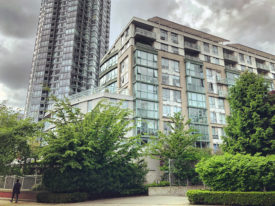
1990s-era social housing (foreground) in Vancouver, BC. Photo by Frances Bula, used with permission.
BC’s social-housing system is big—and complicated
BC Housing, which spent $1.25 billion in its most recent fiscal year, provides subsidies for housing through a variety of mechanisms. There are direct subsidies, based on a rent-geared-to-income practice, in the 5,500 units of old-style public housing that it still owns and manages. Independent non-profit providers get subsidies based on their income mix, along with a lot of supervision of their budgets and operations. And the agency provides rent “supplements” to another 34,200 households in the private market.
The agency also manages the development of new home creation projects that are part of the NDP government’s aggressive building plan (it funded 4,000 new units in its most recent fiscal year), housing that is typically turned over to nonprofits.
Management of these homes is in keeping with the philosophy throughout Canada since the 1980s to serve communities better by shifting away from projects dominated by low-income households requiring a subsidy, and toward mixed-income buildings, run by nonprofits or co-ops, that charge rent on a sliding scale. Typical rents in a single building can range from a minimum of $375 (the shelter amount of a welfare check) to a maximum that is pegged to the low end of what is available in the private market in that neighborhood.
And those projects can take many different shapes because of the way government-supported housing works in Canada—a far more complex and multi-layered system than what exists in the American part of Cascadia.
The US federal government’s main tool for creating subsidized housing doesn’t exist in Canada: the low-income housing tax credit. Created in 1986, it provides a stream of investment money, with rules about what the projects are supposed to achieve. These tax credits have flowed into more than three million units since the start.
But Canada’s federal government withdrew from any kind of tax benefit programs to incentivize rental housing by the early 1980s and ended its direct support for new social housing in 1994. Since then, it has been left mainly to the provinces to fund new subsidized housing projects and to manage those left over from the federal system.
BC remained a leader among Canadian provinces, continuing to provide money for new developments, except for a few years after the BC Liberals were elected in 2001. Some BC cities have stepped up in recent years by providing free or nearly free land and density bonuses to help with construction of new social, but it’s the province that pays all the bills for operating subsidies.
Government-supported housing in the province operates under myriad rules, many of which can be rigid. Non-profits have their budgets carefully scrutinized by BC Housing, can’t always retain surpluses, must adhere to complicated rent level requirements, and have to fill out forms every time a household’s income changes.
“In the States, it’s run a bit more like a system. And the tax-credit program gives the operator so much more flexibility,” says Atkey. “Here it’s prescriptive. And, among the 65,000 units of non-profit housing, there are at least 30 different programs.”
That’s just among the non-profits. Co-op housing is a whole other system—one that’s almost unknown in the United States. Unlike co-ops in the US, which tend to be more of the private-equity kind, famous in New York for their rigorous screening of prospective tenants, Canadian co-ops are collective non-profits that don’t allow for sales of individual units.
Instead, people accepted as members in Canadian co-ops pay a small share to join and the co-op as a whole remains the property of the legal association running it. They became popular in the 1980s, originally supported with federal subsidies to cover part of the cost of their mortgages. Co-ops are managed by boards of their residents, who decide on the mix of income levels and subsidies the group can sustain.
The constraints imposed by the high level of government control have been balanced by an upside during a cataclysmic event like the pandemic: the close link has meant more immediate lines of communication between the province and BC’s affordable housing providers—and tenants—and more efficient government support. That’s a contrast to the American side of Cascadia, where non-profits have been struggling through the pandemic with little backstopping from governments.
Co-ops using a mix of additional government help, internal reserves
When it comes to co-ops, the province of BC decided early that at least some residents would be eligible for the emergency coronavirus rent-relief program, which is providing $300 a month for the next three months to households with no children who make less than $74,000 and $500 to those with children under a $113,000 cut-off. This was a big step for co-ops since members have not been treated as renters in other government programs, like residential-tenancy rules, because they pay a small equity share, typically around $2,000, when they move in and so are considered more like co-owners.
But, when the pandemic hit, “the province was very proactive in making co-ops eligible,” said Armstrong. “They said, ‘These people need help and we’re going to give it to them.’”
As a result, rent relief is available to co-op members who are paying the maximum rents in the mix. Those whose rents are subsidized aren’t eligible, but they have turned to their co-op boards for help—and many have received it.
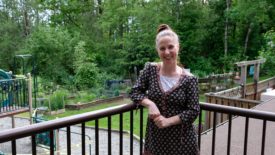
Deanna Overland, resident of the Whattlekainum Housing Co-operative in Burnaby, BC. Photo by Jonathan Guhl, used with permission.
Deanna Overland is one such case. The single mother of two boys, now 19 and 22, has lived at the 103-unit Whattlekainum Housing Co-operative in suburban Burnaby since her first son was born. She has paid rent at different levels over the years. The policy at her co-op, founded in 1983, is that people pay no more than 27 per cent of their gross income. Rents range from $450 to $550 at the low end for two- to four-bedroom units, for those getting the largest subsidies, to maximum payers who are charged $1,050 to $1,300 for the same units. For comparison, the median rent for a three-bedroom-plus unit in north Burnaby is around $2,000.
Overland, who works as an actor and an acting teacher, quickly lost acting work when the pandemic restrictions hit. She’s still teaching at a community centre, online, for now. Her co-op board granted reduced rent for her three-bedroom apartment when she told them about her work situation.
Overland’s co-op can cover reduced rents by dipping into its internal reserves, which it has built up over the years, though some co-ops may not have that capacity if they’ve prioritized keeping rents as low over building up reserves. In response to the pandemic, co-op’s like Overland’s are asking those who can’t pay their full rent to simply defer and repay over a certain period once they’re working again. While a minority of co-ops have said members don’t have to pay at all, most, like Overland’s, are holding the line on asking people to pay what they can and defer, but pay back, what they can’t.
Overland says the flexibility makes a world of difference—along with all the other parts of co-op life she describes as wonderful, like the bonds among members and mutual support through the crisis. “There’s always a sense of community here,” she said, “but the flame is brighter now.”
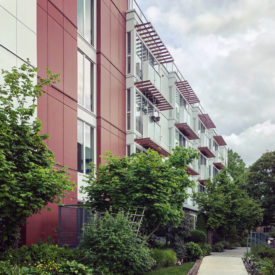
BC’s affordable housing providers have been buoyed by government relief. Pictured: Social housing built in 2015 in Vancouver, BC. Photo by Frances Bula, used with permission.
Nonprofits can get immediate bumps in government subsidy
In BC’s nonprofit housing world, managers are scrambling to balance the books for their buildings. Again, because of the complicated, multi-agency support systems, one non-profit housing group might have to work with the rules of several different programs.
That’s the case for 65-year-old New Chelsea Housing Society, which manages 1,432 units in a variety of buildings throughout the Lower Mainland, serving low-income families, people with disabilities, and seniors.
New Chelsea Housing Society aims to charge people no more than 30 percent of their income and strives for a mix of incomes where possible. It charges as little as $450 a month in a building for seniors, and up to $1,900 a month for a four-bedroom—the maximum rent allowed. Its executive director, Patrick Buchannon, said he has tailored different coronavirus solutions for different tenants, depending on their personal situation.
New Chelsea collected most of its $1.5-million rent roll in April but 53 households (about four percent) couldn’t pay all or any of it. They included one couple paying $1,500 rent for a two-bedroom apartment in False Creek who both lost jobs, hers in the library, his in the film industry. (Market rent in that area for a two-bedroom is around $2,000.) Another was a cook who had his hours significantly reduced when the restaurant contracted to take-out service only.
New Chelsea Housing Society also has to cope with 21 vacant units, unfilled because of COVID-19 restrictions the last two months (though those restrictions are lifting now).
As with Overland’s co-op, New Chelsea is not just giving up on collecting rents. “Our residents are expected to pay their part. We can’t just cancel or waive. The rent is something we’re going to try to recover,” said Buchannon.
Tenants who were paying the top, near-market rates for their units aren’t eligible for an increased subsidy, according to BC Housing rules. So they were encouraged to apply for the general rent-relief program. If they can’t pay the remainder, they get a deferral but not a cancellation of costs. Each non-profit has some kind of reserve to cover that, though it varies by group.
For those who were getting a subsidy, New Chelsea can provide information about their lowered incomes to BC Housing and get an immediate increase in that subsidy.
BC Housing and the non-profit housing association have both supported managers like Buchannon and their teams with daily bulletins and almost daily webinars about how to manage issues arising from the pandemic.
Buchannon says that helps. But he feels like his organization and the nonprofit sector are far from being out of the woods, as more people lose jobs and more rent is deferred. “If this goes on for months and months,” Buchannon worries, “we’ll have to do some new financial planning.”
And New Chelsea is doing better than some; many similar nonprofit housing providers have seen fewer rent payments and have lower reserves to cover the deficit. A small percentage of BC’s units, about 1,800, are not eligible for either an increased direct subsidy or the rent-supplement program, because of various rules. A few others depend on running social enterprises, like thrift shops, to help provide internal subsidies.
And then BC’s affordable housing providers worry that the BC government is going to run out of money. “BC Housing has been very responsive, but we don’t know what will happen in the coming months,” said Atkey. “There’s no certainty whether that [relief] will be sustained or whether BC Housing will run into financial pressures.”

